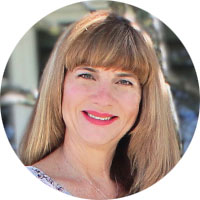Get Easy Health Digest™ in your inbox and don’t miss a thing when you subscribe today. Plus, get the free bonus report, Mother Nature’s Tips, Tricks and Remedies for Cholesterol, Blood Pressure & Blood Sugar as my way of saying welcome to the community!
Scientists find 109 chemicals never reported in people before

It’s no secret that the world around us gets more toxic by the year as factories dump pollutants into our oceans, corporations spew out chemicals into our air, and the agriculture industry coats our food supply in pesticides.
And all of those toxins are showing up in our bodies — where there’s no telling what kinds of horrors they can wreak on our health.
We recently reported on two pesticides that have the power to destroy the action of the sleep hormone melatonin, leaving you at risk for insomnia as well as metabolic disease, diabetes and even cancer.
And now, another study is reporting concerning news…
Researchers at the University of California San Francisco have detected a whopping 109 chemicals in the bodies of pregnant women — 55 of which have never been reported in people before — plus 42 “mystery chemicals” whose sources and uses are a complete unknown.
Plasticizers, cosmetics, flame retardants and more
Led by a former EPA scientist, the study analyzed the blood of pregnant women, as well as their newborn children.
And not only were the mothers’ bodies flowing with the chemicals, so were the bodies of their babies, suggesting the chemicals were able to travel from the mother’s placenta to leach into the child’s blood.
“It is alarming that we keep seeing certain chemicals travel from pregnant women to their children, which means these chemicals can be with us for generations,” said Tracey J. Woodruff, PhD, a professor of obstetrics, gynecology and reproductive sciences at UCSF.
So where are all these man-made chemicals coming from?
Using mass spectrometry, the team was able to identify most of them, in addition to their uses.
According to the team, they found that:
- 40 are used as plasticizers – These are chemicals that go into things like packaging and paper plates.
- 28 are found in cosmetics – The makeup you put on when you wake up can fill your body with chemicals.
- 25 come from consumer products – This can make up a wide range of the things you use every day from a spatula to candles.
- 29 as pharmaceuticals – Chemicals and drug manufacturing go hand-in-hand.
- 23 as pesticides – These are the toxins they spray on food – many of which are banned in other countries, but still contaminate the U.S. food supply.
- 3 as flame retardants – From mattresses to clothing, flame retardants are located in many items you probably have sitting in your house right now.
- 7 from PFAS compounds – PFAS are used in carpeting, upholstery, non-stick cookware and even waterproof fabrics.
The researchers say there may be other uses for all of these chemicals.
Lack of oversight
And those so-called “mystery chemicals”?
Well, the researchers say they can’t identify them or their use because manufacturers don’t always make their chemical libraries available.
An example of this is the latest PFAS compounds they’re using, which are supposed to be safer and less toxic than the old ones. But who knows, since some manufacturers have chosen to block access to their chemical standards.
“It’s very concerning that we are unable to identify the uses or sources of so many of these chemicals,” Woodruff said. “EPA must do a better job of requiring the chemical industry to standardize its reporting of chemical compounds and uses. And they need to use their authority to ensure that we have adequate information to evaluate potential health harms and remove chemicals from the market that pose a risk.”
Reduce your toxic burden
So how do you avoid becoming a walking pool of chemicals?
Well, you might not be able to give all man-made chemicals a miss, but you can reduce your toxic burdens with these tips:
- Eat organic – Avoid conventional foods and the pesticides they’re coated in and choose only organic fruits and veggies. Follow the guidance of the Environmental Working Group.
- Use less plastic – Whether it’s plastic bowls, plastic wrap or Ziploc baggies, anything that’s made of plastic is made of chemicals.
- Throw out non-stick cookware – Instead of non-stick, choose stainless steel or ceramic cookware to avoid those PFAS.
- Reduce medication usage – Whenever possible, go natural for your health rather than taking prescription or over-the-counter medications that could increase your toxic burden.
- Choose chemical-free furniture and mattresses – When shopping for new household items, look for ones without chemicals and flame retardants.
- Pick natural personal care products – Whether it’s deodorant, makeup, or hair care products, look for natural, plant-based options without the chemicals and toxins.
Another very important factor in decreasing the toxic load in your body is the health of your liver. Your hardworking liver is your body’s main detox organ, responsible for filtering your blood and helping to show the “trash” the way out. Consider occasional cleansing to lessen the burden on your liver as well as nutrients that promote liver health.
Toxins are everywhere, but that doesn’t mean we have to accept them in our lives and homes, much less in our bodies. Start reducing your toxic burden today to lower the levels of chemicals in your blood in the future.
Editor’s note: Have you heard of EDTA chelation therapy? It was developed originally to remove lead and other contaminants, including heavy metals, from the body. Its uses now run the gamut from varicose veins to circulation. Click here to discover Chelation: Natural Miracle for Protecting Your Heart and Enhancing Your Health!
Sources:
UCSF study finds evidence of 55 new chemicals in people — EurekAlert!
UCSF Study Find Evidence of 55 Chemicals Never Before Reported in People — University of California San Francisco












